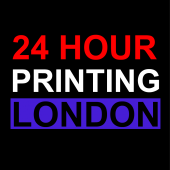Understanding and Using the 24-Hour Clock in London, UK
Introduction
Timekeeping is a fundamental aspect of our daily lives, helping us to organize and schedule our activities effectively. In the UK, both the 12-hour and 24-hour clock systems are used, but the 24-hour clock is often preferred in official contexts, such as transportation schedules and military operations. This article will explore the use of the 24-hour clock in London, UK, its advantages, and how to read and convert times between the 12-hour and 24-hour systems.
The 24-Hour Clock System
The 24-hour clock system, also known as military time in some countries, runs from 00:00 to 23:59. This system eliminates the need for “AM” and “PM” designations, providing a clear and unambiguous method of timekeeping. Each hour of the day is represented by a unique number, where 00:00 represents midnight and 12:00 represents noon. The hours following noon continue as 13:00, 14:00, and so on, up to 23:00, which is 11:00 PM in the 12-hour clock system.
Advantages of the 24-Hour Clock
- Clarity and Precision: The 24-hour clock prevents confusion between morning and afternoon times. For instance, 15:00 is unambiguously 3:00 PM, whereas 3:00 could be either 3:00 AM or 3:00 PM in the 12-hour system.
- Standardization: Many industries, including aviation, military, and healthcare, use the 24-hour clock to avoid misunderstandings that could lead to serious consequences.
- Global Consistency: The 24-hour clock is used internationally, making it easier for people traveling or communicating across different time zones to understand and convert local times accurately.
Reading and Converting 24-Hour Time
To read 24-hour time, you simply follow the number sequence from 00 to 23. Here are some key conversions to help understand the system:
- 00:00 = Midnight
- 01:00 = 1:00 AM
- 12:00 = Noon
- 13:00 = 1:00 PM
- 18:00 = 6:00 PM
- 23:00 = 11:00 PM
To convert from 12-hour time to 24-hour time, you follow these rules:
- From Midnight to Noon (00:00 to 11:59): The hours remain the same as the 12-hour time.
- Example: 7:00 AM becomes 07:00.
- From Noon to Midnight (12:00 to 23:59): Add 12 to the hour component.
- Example: 7:00 PM becomes 19:00.
The 24-Hour Clock in London
In London, the 24-hour clock is widely used in contexts where precision is critical. Transport for London (TfL), which oversees the city’s extensive public transportation network, uses the 24-hour clock for timetables and schedules. This practice ensures that travelers can easily understand and plan their journeys without confusion.
Additionally, the 24-hour clock is commonly used in healthcare settings, ensuring that medical professionals can accurately communicate times for treatments, medication administration, and shift changes. The use of the 24-hour clock in these environments helps to minimize the risk of errors that could result from time misinterpretations.
Conclusion
The 24-hour clock system is an effective and precise method of timekeeping that offers significant advantages over the 12-hour system. Its use in London, particularly in public transportation and healthcare, highlights its importance in ensuring clarity and reducing the risk of errors. By understanding how to read and convert 24-hour time, individuals can navigate these systems with ease and improve their time management skills. As the world continues to become more interconnected, the 24-hour clock remains a vital tool for global communication and coordination.
